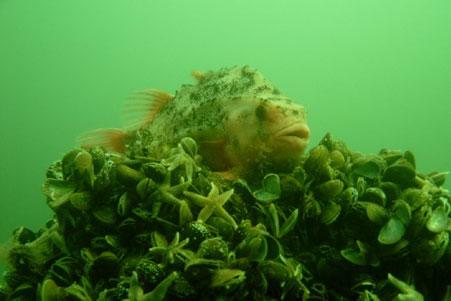
Much to the fishers’ dismay, fish populations in the Baltic Sea have been fluctuating and in the worst case scenarios decreasing since the 1990s. The reasons are many, including habitat degradation. This was why the Mecklenburg-Vorpommern Research Center for Agriculture and Fisheries (the Landesforschungsanstalt für Landwirtschaft und Fischerei Mecklenburg-Vorpommern, or LFA MV) launched a study looking into the technical feasibility of artificial reefs and their potential benefits for local fisheries. The results were promising. Today, there are two artificial reefs that were built thanks to EU funding.
Building artificial reefs to improve the Baltic ecosystem
The main objective of the reef project was to provide attractive fishing areas and to do thorough research on the feasibility and development of such areas. Thanks to EU funding, two artificial reefs were built in the Baltic Sea, at Nienhagen (4 ha in area, 1.5 km off the coast at depths of 11 to 12 m) and Rosenort (1.2 ha, 2 km off the coast at depths of 6 m). Both reefs consist of natural rocks and various underwater structures made of concrete reef cones, tetrapods and concrete rings. In addition, mesh fabrics and lines act as substrates on which seaweed, mussels and other benthic organisms can grow.
The two reefs provide large-scale artificial underwater habitats that create shelter, feeding and rest zones for the fish species present in the area. Ongoing scientific research has shown that the fishing value of the sea areas around the reefs has increased. To achieve a measurable benefit for local fisheries, however, more reefs would have to be established in suitable areas along the coast.
Studying the use of artificial reefs to support local fisheries in the Baltic
These are the only reef projects of their kind in the Baltic Sea to have provided data over such a long period of time. The structures in the water column give the reefs very high biodiversity in comparison to the sandy or marly substrates that surround them. The reefs provide shelter and feeding grounds for many species. They are especially advantageous for young cod, which have a better chance of survival and – according to observations from tagging experiments – return to the same area when they are older. The latest observations from August 2022 showed that one-year-old cod are loyal to the reef areas and are two to three times as numerous there compared to reference areas.
The reefs also have an impact beyond their boundaries. Over the years, young fish have spread across a large area around each of them. Researchers have found more than 30 different species in total, some of which are rare.
It is quite impressive to observe large schools of juvenile cod, gobies or sand eels on a dive between the reef elements
said Gerd-Michael Arndt from the Mecklenburg-Vorpommern Research Center for Agriculture and Fisheries.
The EU contribution has been essential for building the first reefs. Thanks to the good results, Fraunhofer Institute for Graphical Data Processing in Rostock will take over from the Landesforschungsanstalt to continue the maintenance and research in the the reef areas. To expand their knowledge on how reef areas influence the marine environment, the Fraunhofer Institute researchers are looking into building an ocean technology centre and more reefs. They also plan to look into aquaculture opportunities in and around the reef structures.
More info
Details
- Publication date
- 1 June 2023
- Author
- Directorate-General for Maritime Affairs and Fisheries




